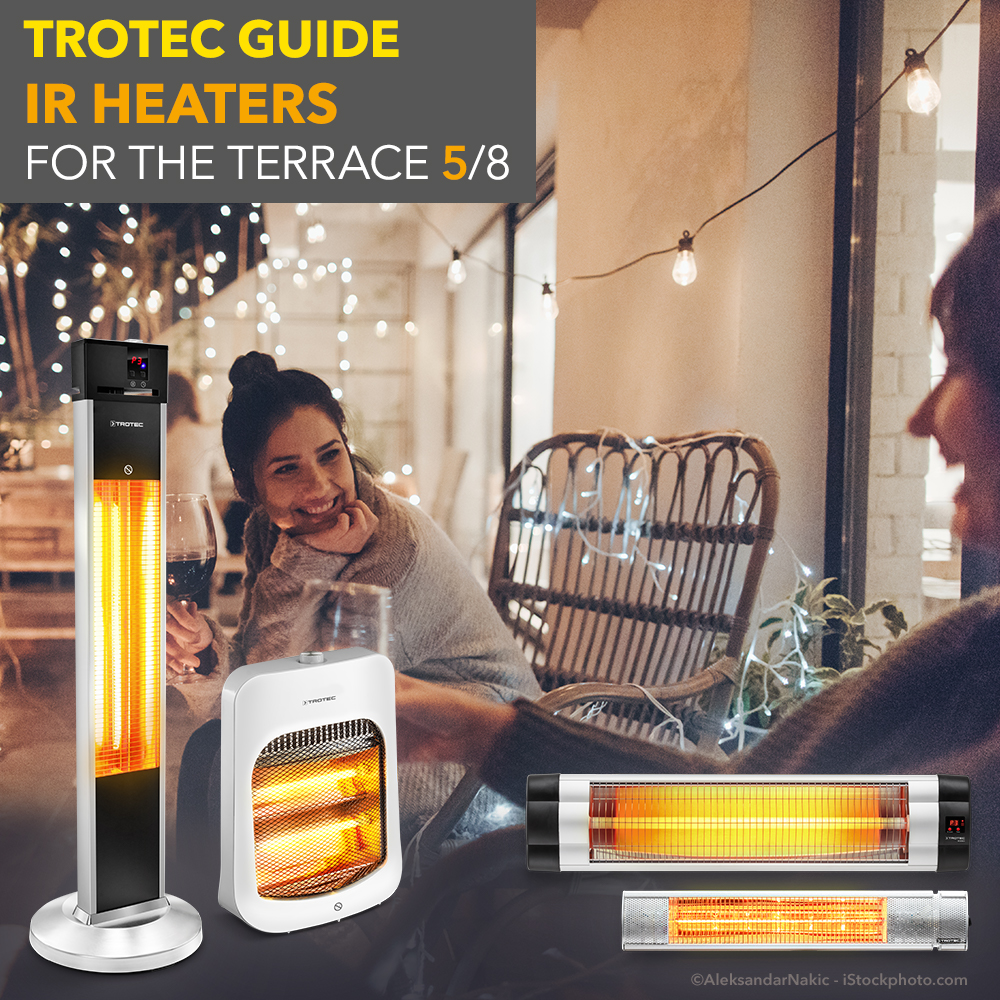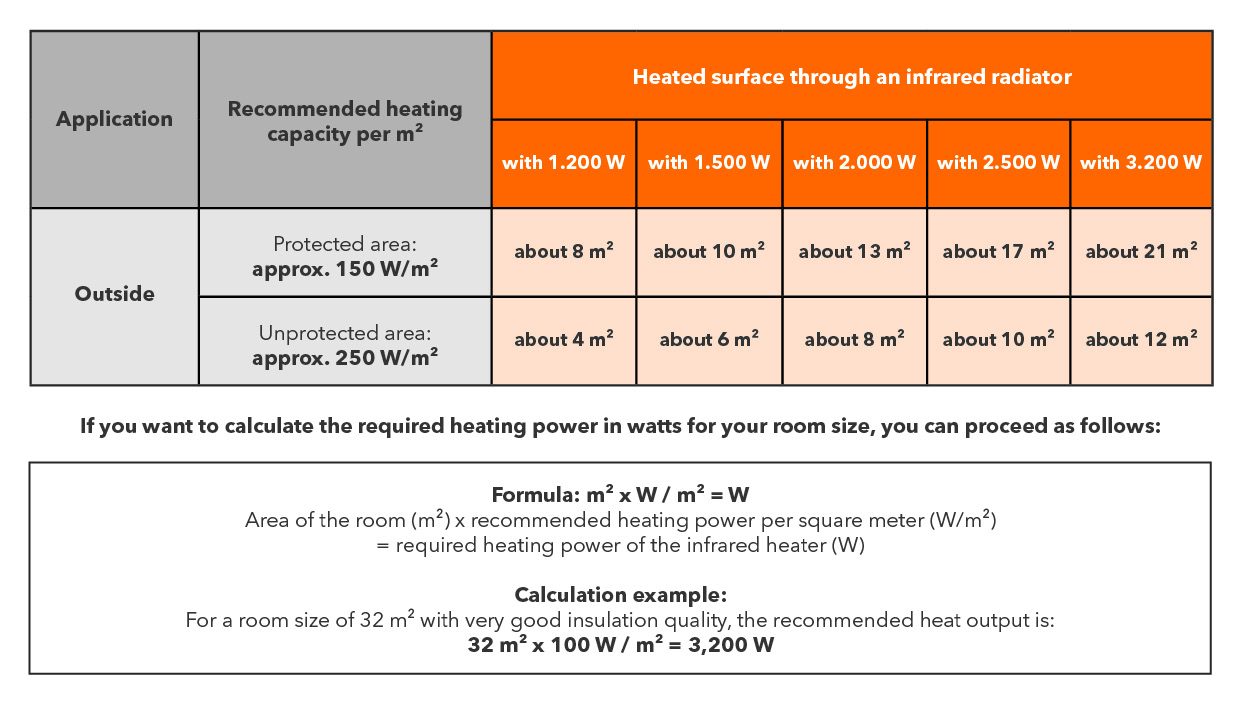Today, the fifth issue of our ‘Infrared radiant heaters for your patio’ Trotec guide is all about money. Because if you want to enjoy the cosy warmth on your patio even in the cool evening hours from an IR radiant heater, you will have to keep an eye on – and control of – the incurred electricity costs. Nevertheless, IR heaters work and heat much more economically than many may initially believe. On the basis of an example calculation, you can very easily determine your demand, including the costs, yourself.
In most cases, infrared radiant heaters have an output of between 1000 and 4000 watts. Depending on the size of the patio, this kind of heating output is necessary in order to be able to produce cosy heat at any time. Let’s take a heater with a heat output of 2000 watts for example. One kilowatt hour of electricity currently costs an average of 29.16 cents in Germany. The 2000 watt IR heater thus costs 58.32 cents per hour in electricity at full heat output. However, most modern infrared heaters from Trotec allow you to select between different heating stages, either using an integrated knob or by remote control. This allows you to adjust the radiant heat to the outside temperature or the size of the heated surface and thus save energy and heating costs.
Overview of the maximum heating area of infrared radiant heaters for outdoor use:
https://de.trotec.com/en/products-services/machinery-homecomfort/heating/infrared-radiant-heaters/
Use this formula to calculate the required heat output in watts for your patio size
Formula: m² x W/m² = W
Patio area (m²) x recommended heat output per square metre (W/m²) = required heat output of the infrared heater (W)
Reading and calculation example:
For a 12 m² terrace size in a protected area with very good insulation quality, the recommended heat output is: 12 m² x 150 W/m² = 1,800 W.
This is how you can learn more about the infrared heater solutions from Trotec:
- You will receive comprehensive information on our infrared heater series in our Trotec shop – here you can find the IR-S radiant heaters, IR radiant heaters, IRD dark radiant heaters as well as the IRS-E pedestal radiant heaters.
- Continue to follow our guide series on this subject: In the next issues, we will clarify issues regarding safety – from high-voltage electrical circuits with ‘overcurrent’ up to the IP protection class issue and the suitability of the radiant heater for certain ambient conditions.
- Call our Trotec team of experts at +49 2452 962-400 or use our contact form. We provide advice when it comes to selecting the right one and answer your questions about our infrared heater series.
Overview of the ‘Infrared radiant heaters for your patio’ Trotec guide
1/8 Taking a look – How IR heaters actually work
2/8 Basic rules – This is how IR heaters are basically setup
3/8 Advantageous – IT heaters bring efficient cosy warmth
4/8 Numerous variants – The right IR heater for every purpose
5/8 Calculable – What IR heaters cost in terms of electricity
6/8 Numerous voltages – This is how IR heaters are supplied with electricity
7/8 To be on the safe side – The IP protection class is decisive for IR heaters
8/8 In a nutshell – What matters when it comes to IR heaters



